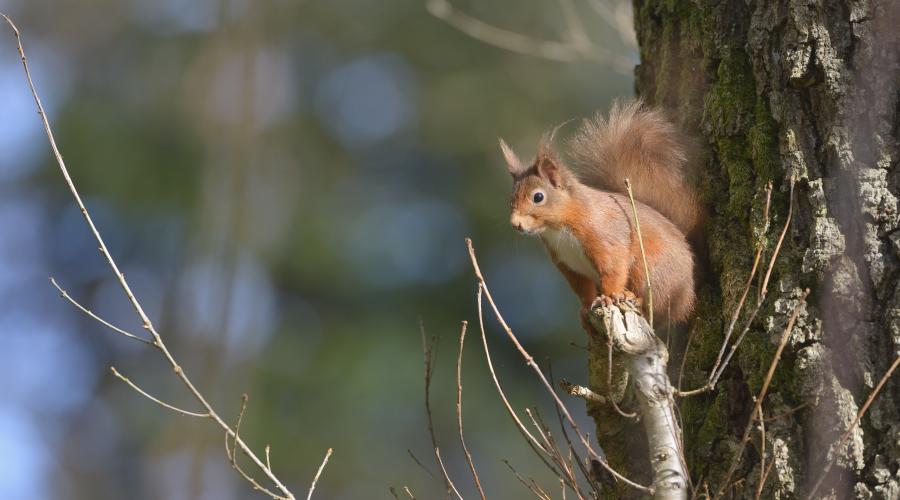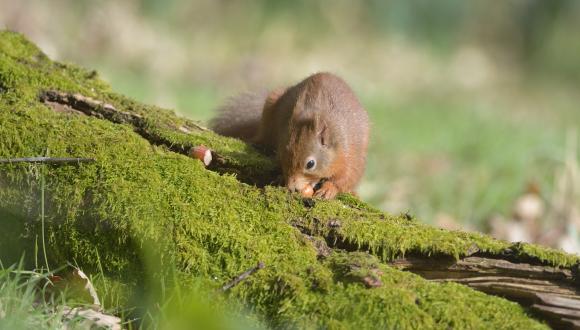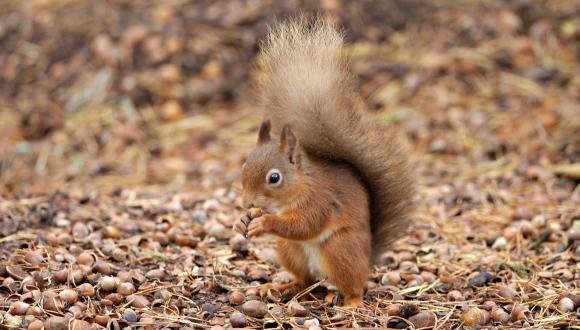
Red squirrel
Britain has just 160,000 or so native red squirrels. About 75% of them live in Scotland’s woodlands, parks and gardens.
Red squirrels rely on a range of woodland habitats, from conifer forest to broadleaf woodland. They feed, nest and breed in trees and need good amounts of well-managed woodland to survive. Changes to either the type of tree or the design of the woodland can significantly affect populations.
Where suitable habitat is patchy, red squirrel populations can become isolated from each other and/or their food sources. There may also be a higher risk of predation where animals are forced to cross open ground.
Loss of woodland in the past has caused difficulties for red squirrels, but our woodlands are currently expanding.
Threats to red squirrels
The biggest problem is the grey squirrel, introduced from North America in the late 19th and early 20th century. Sadly, the grey squirrel out-competes the smaller, more specialised red squirrel across much of its range. Once widespread, our native species was soon lost from most of England and Wales.
Grey squirrels also brought with them diseases that presented new threats to red squirrels, most notably squirrelpox. Fatal to red squirrels, this virus is currently found only in south Scotland. But it has proved very hard to contain and the rest of the Scottish population is at risk.
Squirrelpox is possibly the single greatest risk to the future of red squirrels in Scotland.
Conservation of red squirrels
The red squirrel was one of the first species identified as needing urgent action as a UK Biodiversity Action Plan priority terrestrial mammal species. In 2007, we included it on our Species Action Framework. The Scottish Strategy for Red Squirrel Conservation was updated in 2015.
Our main action has been to support the Saving Scotland’s Red Squirrel (SSRS) project as a partner. SSRS has greatly improved our knowledge of red and grey squirrel populations.
Project work has focused on:
- the control of grey squirrels to protect red squirrels in key areas
- securing red squirrels in south Scotland against risk from squirrelpox
Growing evidence tells us red squirrels have benefited from this work, and the challenge now is to how protect Scotland’s red squirrels in the long-term.
Forestry and Land Scotland is one of many partners involved in developing 18 public and private forest areas, and the Isle of Arran, as red squirrel stronghold sites. It provides guidance and advice on managing the sites for red squirrels.
The Saving Scotland's Red Squirrels and British Red Squirrel are also vital sources of ideas and support for red squirrel conservation work.
Protection of red squirrels
Find out about the red squirrel as a protected species
Learn about red squirrels and licensing
Read our guidance for planners and developers on protected animals
Report a sighting
It's Red Squirrel Week during September every year. Saving Scotland's Red Squirrels have created an online Hub where people can join the fight to help protect these charismatic animals. For more information and to register visit Saving Scotland's Red Squirrels.
Find out how to submit records of mammal sightings on The Mammal Society website.
Contact
If you already have a licence number, include it in the subject line of your email, or have it to hand when you call.






